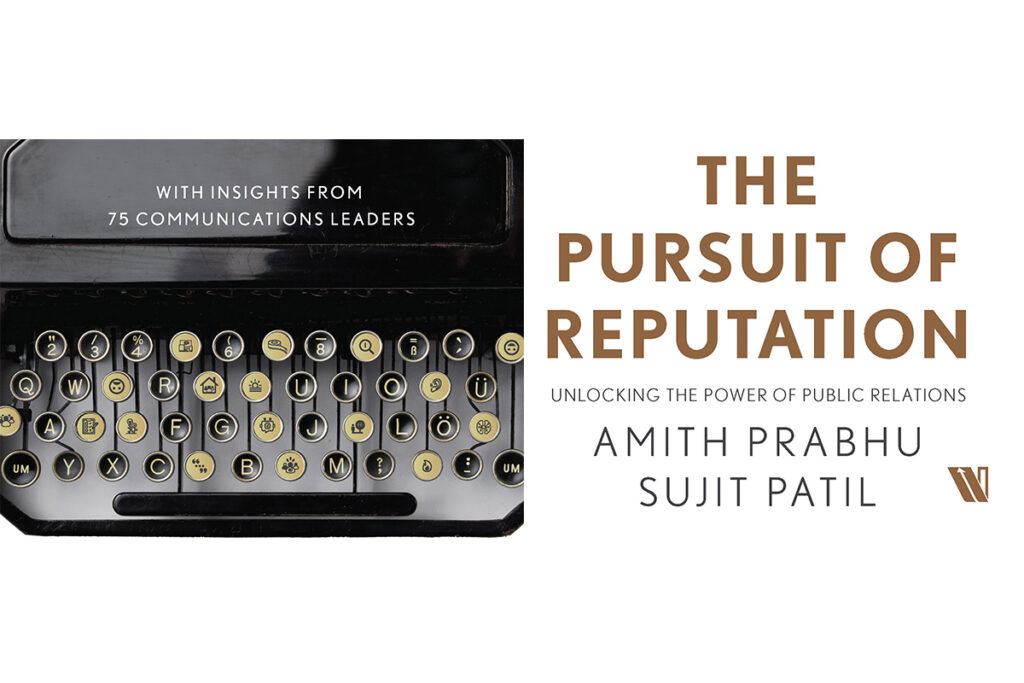As it is with everything, communications is a continuously evolving landscape, and arming yourself with the latest tools and strategies is vital to maintaining a competitive edge
Words by Sujit M. Patil
On a very philosophical level, one can certainly claim that the history of Public Relations (PR) is as old as the history of mankind. Because at the heart of public relations are the fundamental concepts of storytelling, building connections, influencing, and enhancing trust. These tenets have been inherently part of human nature and made civilizations progress. And now corporates and brands too!
Over the years, the concept of public relations increasingly became synonymous with reputation management. As technology grew, so did public relations. The increase in reach and availability of mass media like television, print and radio further helped enhance the efficacy of public relations. The advent of new media and technology has further transformed the way communication happens. The modes, the platforms, the processes have seen large-scale transformation.

The power of influencers is on the rise and managing them has become an additional task. While the 24-hour news cycle prevailed for a while, today a story can go global in seconds. With opportunities for using text, photos, videos, and infographics at a click of a button becoming a reality, it has brought in a lot of focus on online reputation management. Today, PR practitioners are equipped and expected to tell the organizational story as it evolves, and create genuine dialogues around it, all this in real time.
A view of the past few decades through a PR Kaleidoscope could be interesting. “Blog” was named word of the year by Webster in 2004 and it has never looked back since then. 2005 saw social media advancing with Facebook, YouTube and LinkedIn growing big. 2006, 2007 and 2008 were the years when social media press releases with tags and links debuted, and SEO became critical. PR-led digital communications with two-way channels started hogging the limelight in 2009. From 2010 through 2011, mobile phones started serving news, maps, videos, entertainment and much more. 2012 was when content curation became a serious act and by 2013, visual content became the king. With wearable technology announcing its entry in 2014, people continued indulging in information in formats that are personalized, real-time, and engaging. Post 2015, influencers started cropping up big time. These were thought leaders or celebrities who had made a mark in their professions and gained a lot of followers on social networks due to their expertise. Furthermore, in 2016, progressive organisations started setting up digital PR verticals that focused on building networks of influencers to engage with and get stories out in an organic manner. From 2017 to 2018, we saw an incredible growth in the number of influencers in almost every field. 2019 to 2021 saw a rise in demand for authentic narratives, regulations in influencer engagement and calling out of opportunistic content. Today, we are also talking about AI in PR which is becoming a reality!
Today, PR is seen by many serious corporates as a strategic function, and this expertise is sought during business planning. PR has made its transition from a broadcast model to that of being an engagement model. So, a shift from a monologue to a dialogue means that instead of just placing stories, the practitioner must establish conversations with the target group. Digital enables this.
Adoption of CommTech, AI or at least the conversations around it, reliance on data and research driven narratives, increased focus on measurement, increase in regional media relevance, authenticity and empathy in narratives, and many other pandemics infused idiosyncrasies have impacted the PR profession. I reckon the change will only accelerate from here.
In addition, the global macro-economic and socio-politico scenarios, consequences of climate change, multi-country elections, proliferation of AI etc., will profoundly affect our communication strategies going forward.
There are a few aspects that will be important for a future ready PR professional to consider.
Focus on capability building – 2024 is the time!

If one thinks that ‘AI’s impact on PR’ dominated the conversations of PR professionals in 2023, prepare yourself for it to permeate deeper and start demonstrating its impact in 2024. It is important to refresh our skills. Sharing experiences – success stories of application of the technology and then setting aside time to research and implement in our own work area would be an imperative – if one wants to be well positioned in 2025. Enhanced competencies around data analytics, measurement, consumer behaviour, creative writing, understanding ESG, DEI and the ever-changing digital medium will define a consummate PR professional.
Create simplified, pointed content rather than spray and pray!
The clutter and chaos of information overload continues to be on the rise. The fatigue is visible from the multiple squabbles between PR professionals and journalists witnessed during the year. Hence, we’ll see a rise of ‘to the point’ content that is authentic and truly impacts the audience, even with diminishing attention spans.
Invest in cause and purpose based real human centric content
As the universe gets bombarded with AI-generated content that is sans emotions, authenticity, empathy and maybe visibly fake, the audience connect will start diminishing. It is a good time in anticipation to start investing in more realistic human first content. Think of your employees as real ambassadors and encourage them to be the spokespersons of your organization’s good behaviour.
Build communities through owned media properties
Building your own communities across stakeholder segments will be key. These owned media platforms – be it blogs, podcasts, interactive sites, or social media handles offer audiences free access to content that is unique and interesting, sometimes co-created. The objective is to reach the desired audiences organically, build affinity, provide experiences, and express your purpose.
Manage reputation and more so the online reputation!

I have always believed in the maxim – Reputation is majorly about behaviour. And reputation is owned by stakeholders and not by the brand. Corporate communications professionals will have to educate leaders and employees on good corporate conduct. Public scrutiny is on the rise and the vulnerability of even good corporates to come in the crossfire of public opinions has increased. ORM (Online Reputation Management) and listening has garnered larger significance and will be an indispensable tool in the arsenal of every PR professional.
Measure, analyse, and use data to drive effectiveness of PR
Tracking impact of communication has become imperative, and PR teams will have to measure KPI’s that can demonstrate return on objectives and/or impact of PR on a CEO’s KRA’s and the company’s bottom line. Having data and analytics will help professionals measure results against goals and channelize their ERP’s (Efforts, Resources, Processes), and hence garner larger credibility with the C-Suite. The trend of using data to make informed decisions around content that resonates with audiences, changing tactics during a campaign, and respond during a crisis will elevate the stature of the PR industry. Archaic measures like AVEs will become obsolete. It is a surprise some still use it!
Use ‘Lo-Fi’ unfiltered content to engage with audiences
‘Lo-Fi’ is the opposite of ‘Hi-Fi’ that has reference to superior audio/video quality. If you observe keenly, audiences on social media like organic, real feeling content from creators. I highly recommend incorporating Lo-Fi unfiltered content into your communication strategy.
A regional, hyperlocal, sharper, and niche-based lens for media and influencer engagement
In 2024, just like 2023, I see a trend of deeper engagement with existing content creators and building newer regional connects. I also see a shift in priority from quantity to quality of content from the influencers/creators. The pandemic has made us focus our attention on hyperlocal news. So sharper messaging and curated content for each region in regional languages rather than one common message would enhance overall effectiveness.
Enhance PR around DEI and ESG to garner competitive advantage and build a strong employer brand
Research has shown that employees prefer working with organizations that demonstrate concern for the environment, are socially responsible and have a good reputation. As more and more employees, consumers and other stakeholders raise their expectations of brands on ESG and demonstration of DEI at workplaces, PR professionals should use the opportunity to build a strong employer brand through more and more focused PR campaigns around these themes.

The past few years have provided enough opportunities for us to understand what works and what does not. The ‘Covid cleansing’ has helped eliminate resource draining, non-value adding processes. The pandemic also turned the attention of the board towards communications and the CCOs. The positioning of a communication function now needs to shift from being a cost-center to that of a value-generator. And this will happen when professionals upskill themselves and stay relevant with the times.
Editor’s note:
Sujit M Patil is the Vice President and Head of Corporate Brand and Communications for Godrej Industries Limited and Associate Companies. He is the co-author of the Best-Selling book – “The Pursuit Of Reputation” by Westland Business


